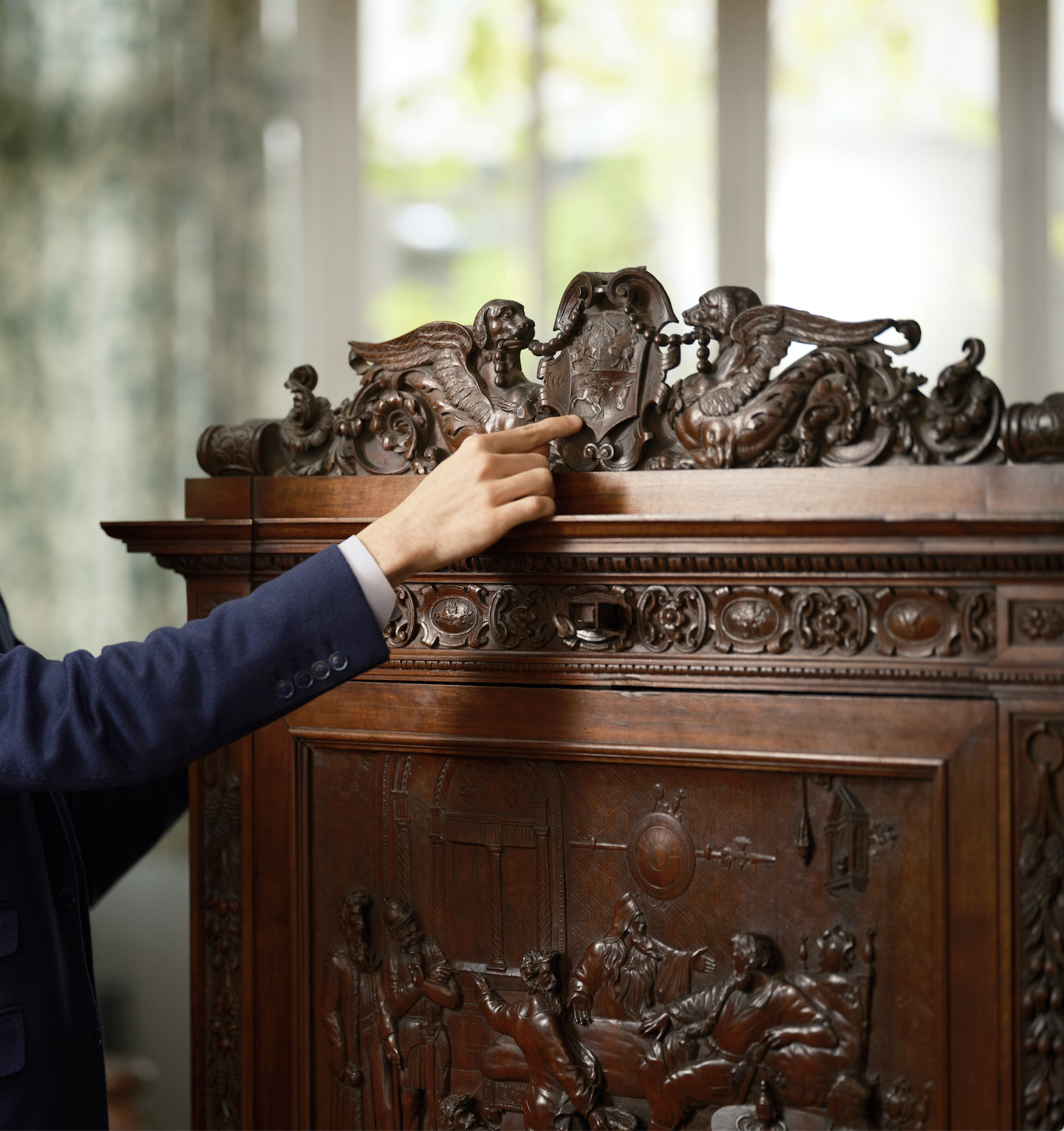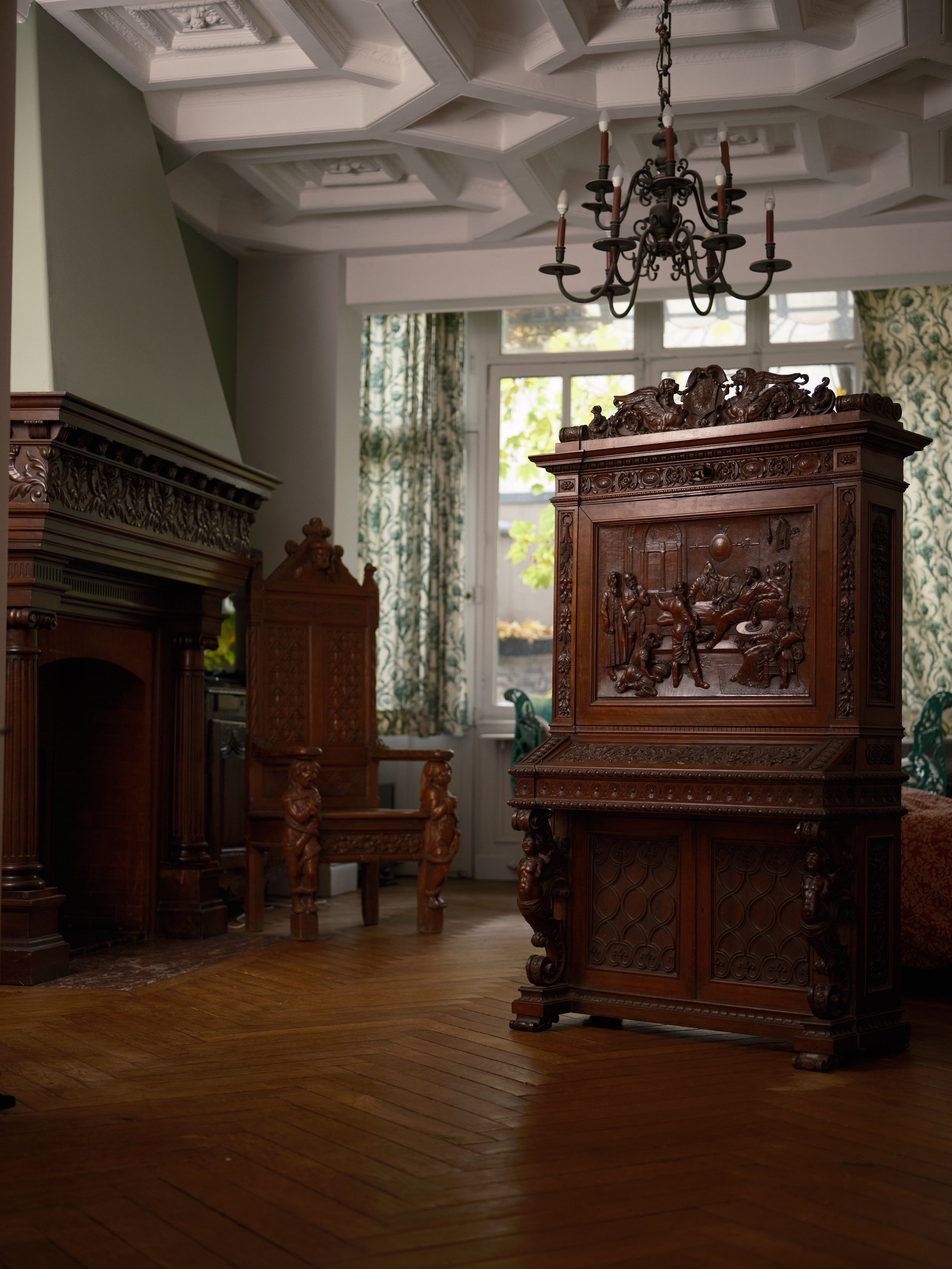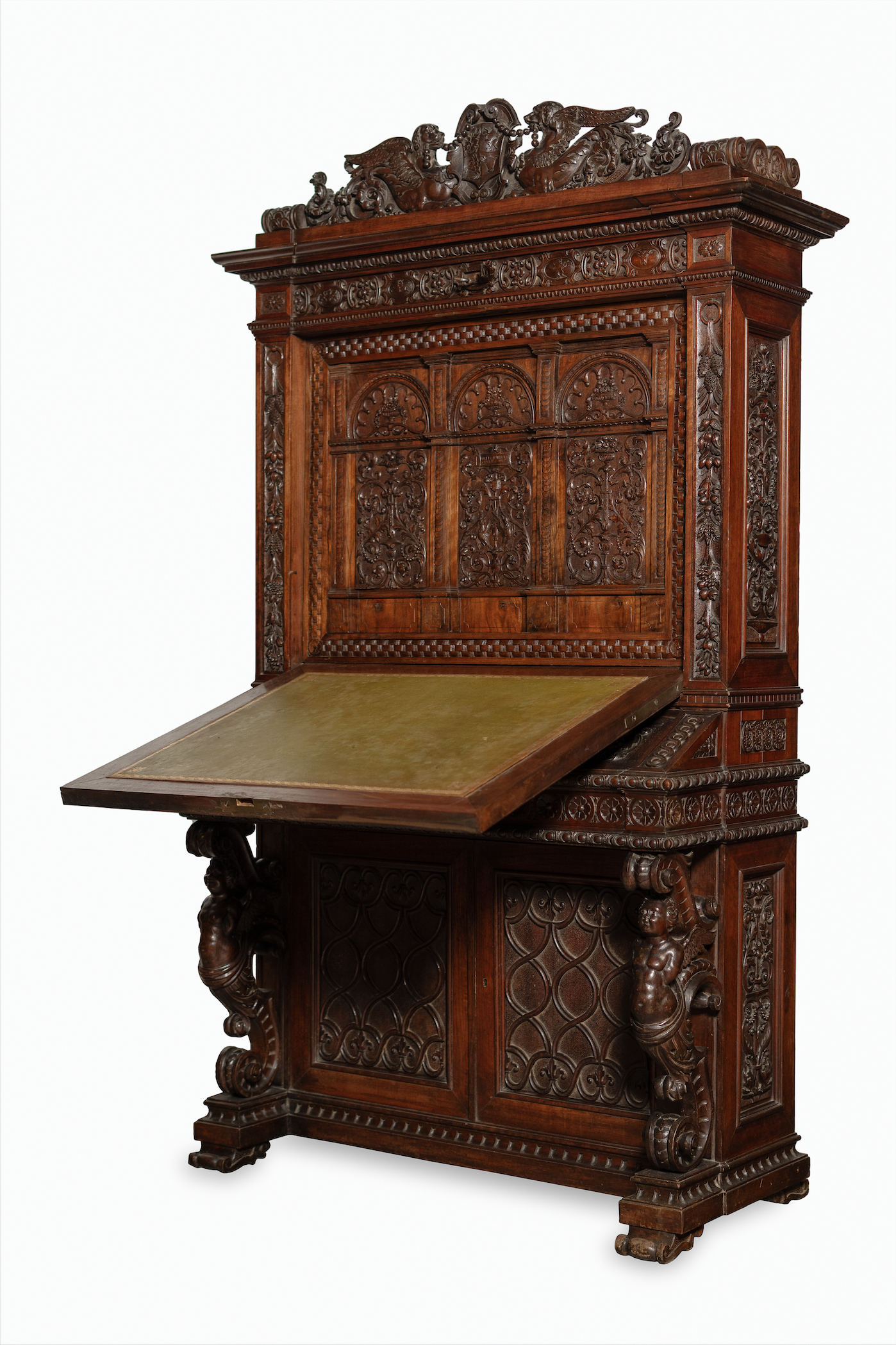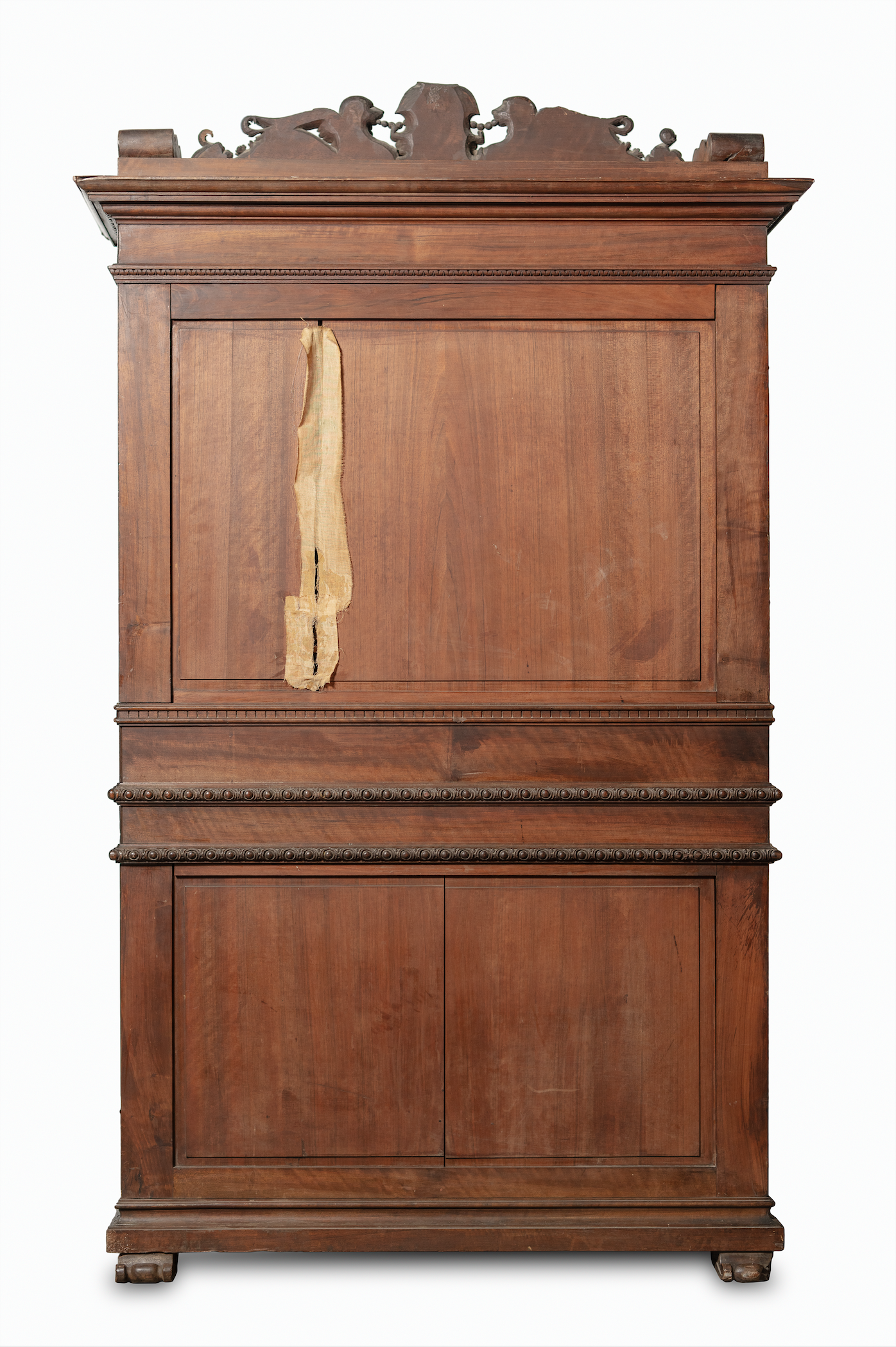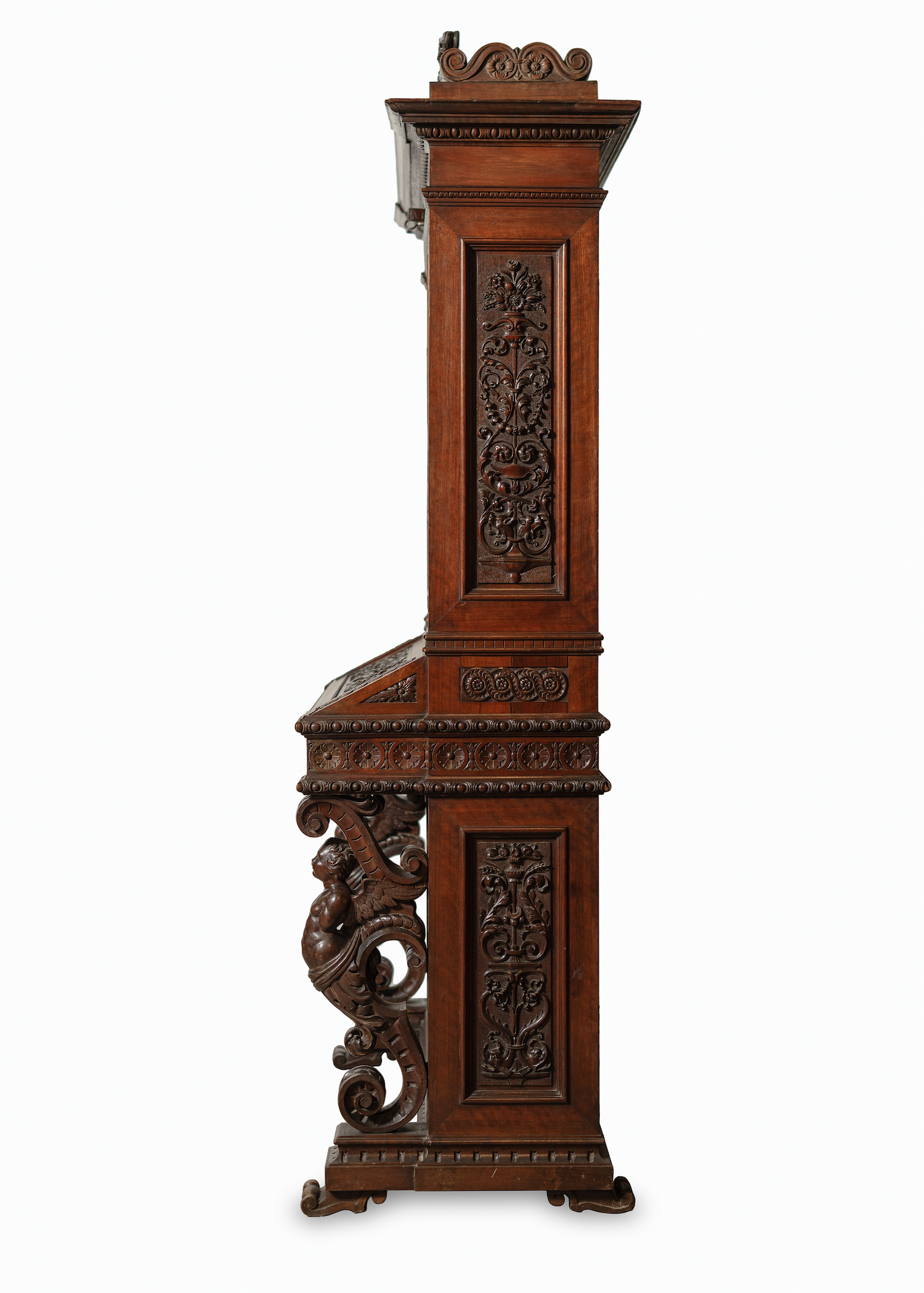(SOLD) to the Nelson-Atkins Museum of Art; 1851 Desk by Angiolo Barbetti
In solid walnut, and decorated on all sides, this is a major work by the celebrated Italian carver, angelo barbetti (1803-1880). The piece is interestingly dated to 1851, the same year of the Great Exhibition in London at which the modern day Victoria & Albert Museum purchased works from Barbetti still in the museum today. The elaborate fall front of the desk presents a sculpted portrayal of king Priam offering a ransom for the body of his slain son, Hector, braving the anger of Achilles.
Finely carved winged acanthus monsters, with the heads of perhaps the prince’s beloved hounds, masterfully reveal the princely Troubetzkoy family’s arms from behind openworked strands of pearls.
Prince Paolo Petrovich Troubetzkoy (1866- 1938) was an artist and a sculptor who was described by George Bernard Shaw as “the most astonishing sculptor of modern times.” Prince Pyotr Petrovich Troubetzkoy (1822– 1892) was a Russian diplomat, administrator and general whose work in the 1860s took him to Florence where he met his wife. He fathered painter Pierre Troubetzkoy (1864- 1936) whose works are conserved in the Smithsonian American Art Museum. Iden- tifying the arms only confirms one’s suspis- cions that this desk was the pride and joy of a mysterious 19th century Prince. The bull, the pheonix, the vytis (Lithuanian Knight), and the two griffons holding a crown are the symbols of this princely house of the Grand Duchy of Lithuania. They originate in the 14th century and later become prominent in Russian science, history, and arts.
Height: 69 inches. Length: 40 inches. Depth: 18 inches.
Works by this master carver, an intagliatore as his label within the gallery’s piece reads, notably adorn the eccentric interiors of the Isabella Stewart Gardner Museum. In London, the Victoria & Albert Museum conserves an impressive trace of Barbetti’s exhibit at the first World’s Fair. In America, much of his work, and that of his sons, is hidden by the private walls of neo-renaissance gilded-age interiors on the East Coast. His wonderfully executed and specially commissioned frames, are perhaps overshadowed by the renaissance period pictures they present, such as Bernardo Luini’s c. 1510s oil on panel; Madonna & Child with John the Baptist, in the National Gallery of Art. Barbetti’s work, while refined, is not exact reproduction, but rather a lively re-proposal which is now a memory of his time’s fantastic vision of the spectacular 16th century interior.
Angiolo/Angelo Barbetti was born in Siena in 1803 and he passed away in Florence in 1880. Ac- cording to a translation of the Benezit dictionnary entry for Barbetti : “settled in Florence after having lived and worked in Siena, where he had carved some interesting pieces, not least with respect to the restoration of the altar in the church of La Contrada della Tartuca, a commission he executed in col- laboration with Manetti. In Florence, he established a school for wood carving, among whose pupils were his own sons Raffaello and Rinaldo. As a contemporary of Spighi, Falcini and Rosani, Barbetti belongs to the group of artists who reintroduced into Italy the skills of woodcarving and marquetry. Barbetti also worked on the cathedral façades in Orvieto and Siena.”
According to the 1892 DeGubernatis dictionnary of living Italian artists, Barbetti provided commis- sions for Anatole Demidoff and other Russians, for the Rothchilds and other wealthy Europeans.His Siena workshop made interiors for some of the most prominent clients in Europe. Angiolo Barbetti’s main workshop was established after this 1851 desk was made, in 1863 when he purchased a circular skylit building which is located on the square of Il Prato in Florence. The structure was built in 1847 for the presentation of 360-degree panoramas of Italian cities, but it came to prominence as the site of Barbetti’s furniture production activities which made him famous in Italy and abroad. The building was subsequently used as a warehouse, and today it houses a restaurant and a horse agency. His sons were not without a certain renown, as Raffaello explored work with ivory, and was awarded medals at various exhibitions. Rinaldo, also a carver, left his most notable works in the form of several bas-reliefs in Nottingham college’s church, and the front door of the Russian church, San Donato, in Florence.
Myers & Monroe, LLC
